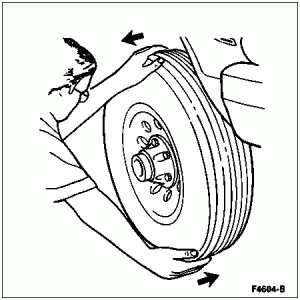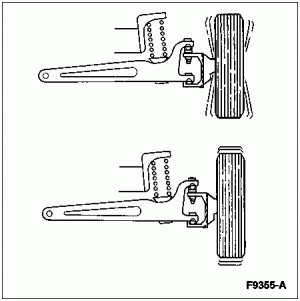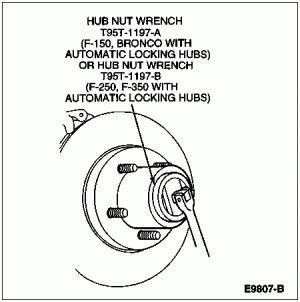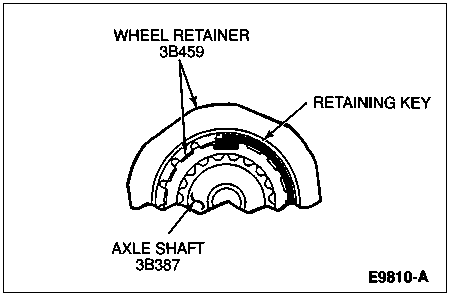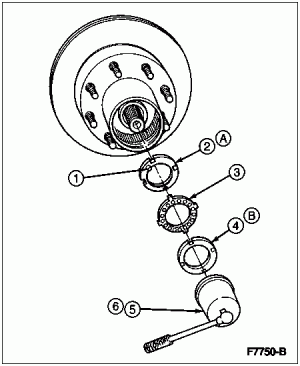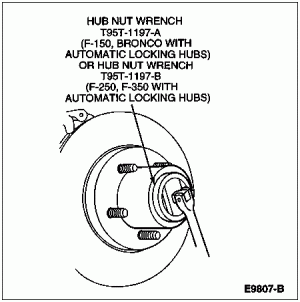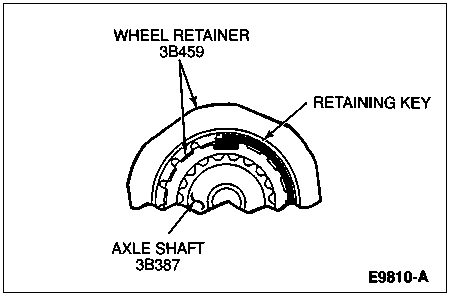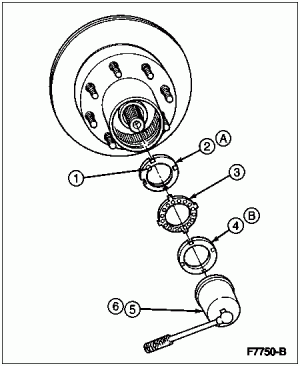Yo Dogg,
OK.
Look @
96 Bronco-F-Series Workshop Manual (PARTIAL) by FORD via
http://www.diesel-dave.com/vehic/manual/stj/stjleft.htm
96 is same as most earlier years especially 92-96, except for:
92 through 95 uses the Electronic Engine Control, version Four (EEC-IV, aka On Board Diagnostics (OBD-I)) engine management computer
96 uses the OBD-II (EEC-V) engine management computer;
4WABS (93-96);
RABS (87-92);
Air Bag (94-96);
3 ***** Automatic Locking Hubs (Built from May 95 through 96); Spark Plug Wire Routing & Firing Order (The firing order for 1987-1993 5.0Ls is 1-5-4-2-6-3-7-8. The firing order for 1994- 96 5.0Ls & all 5.8Ls is 1-3-7-2-6-5-4-8.);
R134a in 94-96;
2-piece Spindle Rolling Diaphragm Seal (RDS) used on 5/95 to 96 Broncos & F Series 1/2-ton 4WD;
Mass Air Flow in 95 5.8 California models and in all 96s, other years used Manifold Absolute Pressure Sensor (MAP).
96 5.8 do not have the Air Injection (AIR), Secondary Air Injection; Pump (Smog Pump), Thermactor Air Bypass (TAB) & Thermactor Air Diverter (TAD) Solenoids; Diverter, Check & Bypass Valves, Cross-Over Tube, etc. But 96 5.0 does have the system.
The 96, Vapor Management Valve (VMV) replaces the canister purge valve (CanP valve) used in EEC IV.
The Speed Control Deactivation Switch (SCDS) in a 93 Bronco is located on the driver side frame rail, but in 94 through 96 it is on the master cylinder.
Still researching other differences.
Go to Section 05-00: Axle and Driveshaft, Service
DIAGNOSIS AND TESTING
Inspection and Verification
Non-Axle Noise
nspection and Verification
Certain rear axle (4001) and driveline trouble symptoms are also common to the engine (6007), transmission (7003), rear wheel bearings (1225), tires and other parts of the vehicle. For this reason, make sure the cause of the trouble is in the rear axle before adjusting, repairing or replacing any of its parts. Refer to Diagnosis and Testing in Section 00-04.
Certain trouble symptoms may be caused by limited slip differentials. Check the vehicle certification and axle ratio tag to determine the type of differential.
U-Joint Inspection
Prior to checking driveline angularity, inspect the universal joints for proper operation.
Place the vehicle on a frame hoist and rotate the driveshaft (4602) by hand. Check for rough operation or seized universal joints. If the universal joint shows signs of seizure, excessive wear or improper seating, scribe alignment marks on the driveshaft and rear axle companion ******. Remove the driveshaft and remove and replace the universal joint. Install the driveshaft in the marked original position.
*** Skipping to **** ;
There are a few other conditions that can sound like axle noise and have to be considered in diagnosis.
The three most common are exhaust, tires and trim mouldings. Make sure that none of the following are the cause of the noise before proceeding with an axle teardown and diagnosis.
In certain conditions, the pitch of the exhaust may sound like gear whine. At other times, it can be mistaken for wheel bearing rumble.
Tires — especially snow tires — can have a high-pitched tread whine or roar similar to gear noise. Radial tires, to some degree, have this characteristic. Any non-standard tire with an unusual tread construction may also emit a roar or whine-type noise.
Trim, grille and mouldings can also cause whistling or whining noises.
Analysis of Gear Noise
Gear Howl and Whine
Before disassembling the axle to diagnose and correct gear noise, eliminate the tires, exhaust, trim items, roof racks, axle shafts and rear wheel bearings as possible causes.
The noises listed on the Road Test Form in this section usually have specific causes that can be diagnosed by observation as the unit is disassembled. The initial clues are, of course, the type of noise heard on the road test and the driving conditions.
Bearing malfunctions will normally be obvious at disassembly. As noted earlier, inner and outer pinion bearings make a high-pitched, whistling noise, usually at all speeds. If there is only one pinion bearing that is malfunctioning, the noise may vary in different driving phases.
Pinion bearings are frequently replaced unnecessarily on axles with low mileage under 24,139 km (15,000 miles) when correcting gear noise. They should not be replaced unless they are actually scored or damaged, or there is a specific differential pinion bearing noise. Examine the large end of the rollers for wear. If the pinion bearing's original blend radius has worn to a sharp edge, the pinion bearing should be replaced.
Remember that the low-pitched rumble of a malfunctioning wheel bearing can also be caused by the exterior luggage rack or tires.
Rear wheel bearing noise might be mistaken for pinion bearing noise. Inspect the rear wheel bearing carefully before tearing down the axle.
Etc.
...
*** Skipping to ****
Section 05-02G: Axle, Integral Carrier, 8.8-Inch Ring Gear
SPECIFICATIONS
Axle Shaft End Play
Axle shaft end play is allowable up to 0.762mm (0.030 inch), but can be as low as 0.127mm (0.005 inch). It is controlled by the u-washer (4N237) that holds the axle shaft (4234) in the pocket of the differential side gear (4236). To reduce clearance, replace differential side gears, Traction-Lok® clutch plates if equipped, differential side gear ****** washers (4228) or axle shafts as required.

